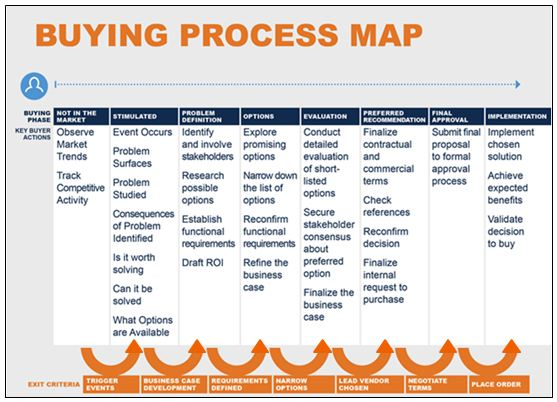Your firm recently lost a major account. Inevitably, sales leadership and the executive team will want to know what went wrong. Typical questions are: “what was missed?”, “what changed?”, “were we out sold?” and so on. There’s always a great deal of analysis and soul searching. However, are you searching in the right places?
As in many scenarios, the key is to make sure that you’re asking the right questions. Oftentimes this is much more important than uncovering answers. If you lost a major account, you must ask questions about the customer’s state of mind. In other words, can your team identify the trigger events that preceded the departure?
Persona Based Marketing
Has your team adopted Persona Based Marketing that’s aligned to the buyer’s journey? If not, they are likely just spinning in circles. Persona Based Marketing isn’t necessarily a panacea for success. What it will guarantee (if used properly) is that your team will remain aligned with the customer. It’s likely that the customer gave signs of discontent prior to their departure. By utilizing Persona Based Marketing, you increase the likelihood that you identify and circumvent problems before they become catastrophic.
Buying Process Map
A key component to this system is the Buying Process Maps (BPM). This focuses on Buying Phases, Key Buyer Actions, and Buyer Questions. If you continually reference the BPM for these different elements, you’re more likely to uncover customer needs before a miss occurs.
If you’re new to Buying Process Maps, download the BPM Micro-Question Guide to learn more. It will walk you through the process of developing a buyer centric BPM to keep you aligned and ahead of the curve.
Key Elements of a Buying Process Map
Buying Phases
There are 8 predominant phases that you’ll find in the buyer’s journey. This applies to new business, but it also applies to existing business. Whether the customer is renewing a service or in need of a new one, these events remain relevant. The 8 phases are:
- Not in the Market
- Stimulated (trigger event occurs)
- Problem Definition
- Options
- Evaluation
- Preferred Recommendation
- Final Approval
- Implementation
Each phase represents the customer’s state of mind. For example, a customer isn’t in the market because they have no need to refinance their home. All of a sudden, interest rates drop (trigger event) and they become stimulated. At this point, the buying process begins. The customer identifies the problem or opportunity, looks for options and so on.
Trigger Events
Trigger Events fall under two categories: Proactive and Reactive. A proactive trigger is an event where the buyer choses to make a change based on perceived positive outcomes. A reactive trigger is preceded by an event or action which forces the buyer to make a change (ie: competitive pressure).
If this is a major account, your team works to satisfy this customer. They are responsible for keeping this customer both happy and competitive in their industry. Your team must be on the lookout for trigger events (both proactively and reactively). It is then their responsibility to properly analyze and pitch these opportunities to the customer.
Key Buyer Actions
Within each phase of the Buying Process, customers engage in a series of activities. Identifying the Key Buyer Actions (KBA) is essential to mapping out the buyer’s journey. What is the buyer doing and when?
In the graphic above are some of the classic KBAs in a B-to-B buying cycle. For each persona, walk through the buying process map and identify if they are engaged in that activity. You can use the common KBAs to guide your efforts. You’ll likely find there are many not applicable to the persona and others missing. Add or delete KBAs as needed.
This is all part of the process of truly understanding your customer. Trigger Events and KBAs both help keep you aligned to what will best serve the customer (and therefore best serve your organization as well).
Buyer Micro-Questions
Along the buyer’s journey, your customers are asking themselves questions. How they answer them has an enormous impact on whether they buy or not. Based on your research, list the questions your customer is asking him/herself. Then put yourself in your customer’s position and ask yourself those questions. How would you answer them? Can you anticipate their needs?
Exit Criteria
Exit Criteria is something your buyer does that indicates they’ve moved from one phase to another. For example, a buyer moves from “Not in Market” to “Stimulated” after a Trigger Event.
These are the key elements of a buyer process map aligned to persona marketing. The value in the approach is that you moving closer to being truly customer centric. It’s easy to give lip-service to being customer focused. Persona based marketing and buyer process maps help your organization align in tangible to the customer beyond catch phrases and slogans.
Download the BPM Micro Question Guide and get started today. Your customers (and bottom line) will thank you.





